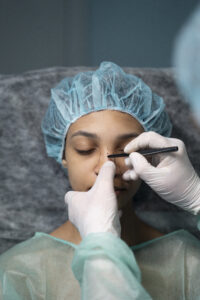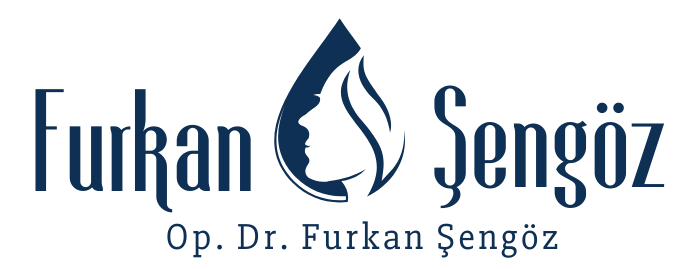Nose Job (Rhinoplasty): Everything You Need to Know Before Reshaping Your Nose
What Is a Nose Job?
A nose job, medically known as rhinoplasty, is a surgical procedure that changes the shape or function of the nose. It is one of the most popular cosmetic surgeries in the world, helping individuals enhance facial harmony, boost self-confidence, or improve breathing issues.
While some undergo a nose job purely for aesthetic refinement, others seek it for reconstructive or functional purposes. Regardless of the reason, a successful nose job can dramatically improve one’s appearance and quality of life.

Why Do People Get a Nose Job?
There are several reasons why people choose to get a nose job:
To correct a crooked or asymmetrical nose
To remove a dorsal hump or bump
To refine the nasal tip (bulbous, droopy, or boxy)
To reduce the width of the nose or nostrils
To improve breathing by correcting internal structures (such as a deviated septum)
To correct injuries or birth defects
To revise a previously unsuccessful rhinoplasty
Types of Nose Jobs
There are different types of nose jobs depending on the patient’s needs:
- Cosmetic Rhinoplasty
Performed to improve the appearance of the nose. It involves reshaping the nasal bones and cartilage for aesthetic goals.
- Functional Rhinoplasty
This procedure focuses on restoring proper airflow through the nose. It’s often combined with cosmetic changes.
- Revision Rhinoplasty
Corrects issues from a previous nose surgery, whether aesthetic or functional. It’s often more complex and requires a skilled surgeon.
- Ethnic Rhinoplasty
Tailored for patients of diverse backgrounds. The goal is to enhance the nose while respecting the patient’s cultural identity and facial harmony.
Open vs. Closed Nose Job: Which One Is Right for You?

- Involves a small external incision between the nostrils
- Allows the surgeon greater visibility and control
- Preferred for major reshaping or revision cases

- All incisions are made inside the nose
- No visible scars, less swelling
- Suitable for simpler cosmetic changes
The choice depends on your anatomy and the complexity of the desired changes. Your surgeon will determine the best technique for you.

The Nose Job Procedure: Step by Step
Step 1: Consultation
Your journey begins with a detailed consultation, where the surgeon evaluates your nasal structure, discusses your goals, and provides a surgical plan. Some clinics use 3D imaging to simulate the expected results.
Step 2: Surgery
- Typically performed under general anesthesia
- Duration: 1.5 to 3 hours, depending on complexity
- Outpatient procedure (same-day discharge in most cases)
Step 3: Recovery
- Swelling and bruising are common in the first week
- Nasal splint is usually removed on Day 7
- Major swelling subsides by Week 3–4
- Final results appear over 6 to 12 months
Recovery Timeline: What to Expect
| Time Frame | What Happens |
| Day 1–3 | Bruising, swelling, possible congestion |
| Day 5–7 | Splint and sutures removed |
| Week 2 | You can return to work/social life |
| Month 1–3 | Shape becomes more refined |
| Month 6–12 | Final nose shape visible |
To speed up healing, follow your surgeon’s aftercare instructions, avoid smoking, and keep your head elevated.
Risks and Considerations
While nose jobs are generally safe, as with any surgery, there are potential risks:
- Bleeding or infection
- Difficulty breathing
- Scarring (rare in closed techniques)
- Asymmetry or dissatisfaction with the result
- Need for revision surgery
Choosing a qualified and experienced plastic surgeon significantly reduces these risks and improves your outcome.
Ideal Candidates for a Nose Job
You may be a good candidate if:
- You are physically healthy
- Your nose has fully developed (typically age 16–18)
- You have realistic expectations
- You are emotionally stable and understand the procedure’s risks and benefits
During your consultation, your surgeon will assess whether a nose job is appropriate for you.

How to Choose the Right Surgeon
The success of a nose job largely depends on the surgeon’s skill and aesthetic sense. Here are tips for finding the right expert:
Board-certified in plastic or facial surgery
Specializes in rhinoplasty or facial procedures
Provides extensive before-and-after photo galleries
Has strong patient reviews and testimonials
Offers clear communication and personalized planning
Bonus tip: Ask if the surgeon uses ultrasonic tools (Piezo rhinoplasty) for more precise and gentle bone reshaping.
Nose Job Cost: What Should You Expect?
The cost of a nose job varies depending on the surgeon, location, and procedure complexity. Typical price ranges are:
- USA/Canada: $7,000 – $15,000
- UK/Europe: €5,000 – €10,000
- Turkey or Thailand: $2,500 – $5,000 (including accommodation and transfers)
If traveling abroad, consider medical tourism packages, which often cover:
- Consultation
- Surgery
- Anesthesia and hospital fees
- Hotel stay and transport
- Post-operative check-ups
Always prioritize safety and qualifications over price alone.
Psychological and Emotional Benefits
A successful nose job can have a profound impact on how people see themselves:
- Increased self-esteem
- Enhanced facial balance
- Improved social confidence
- Relief from long-standing insecurities
However, it’s crucial to remember that surgery won’t solve emotional or psychological issues. That’s why reputable surgeons screen patients carefully and ensure their motivations are healthy and well-informed.
Non-Surgical Nose Jobs: Are They an Option?
Yes—non-surgical rhinoplasty (also known as liquid rhinoplasty) is an option for some patients. It involves injecting dermal fillers to temporarily:
- Smooth bumps
- Lift the tip
- Improve symmetry
Pros:
- Quick and non-invasive
- No downtime
- Immediate results
Cons:
- Temporary (6–12 months)
- Limited to minor corrections
- Not suitable for functional or major reshaping
Final Thoughts: Is a Nose Job Right for You?
Whether you want to refine your appearance, improve breathing, or correct a past surgery, a nose job can be life-changing when done for the right reasons—and by the right surgeon.
Invest in consultations, ask the right questions, and take your time to understand the process. The result could be more than just a new nose—it could be a new sense of confidence.
Contact Form
- Copyright © 2025 – Op. Dr. Furkan Şengöz



 To correct a crooked or asymmetrical nose
To correct a crooked or asymmetrical nose Board-certified in plastic or facial surgery
Board-certified in plastic or facial surgery
